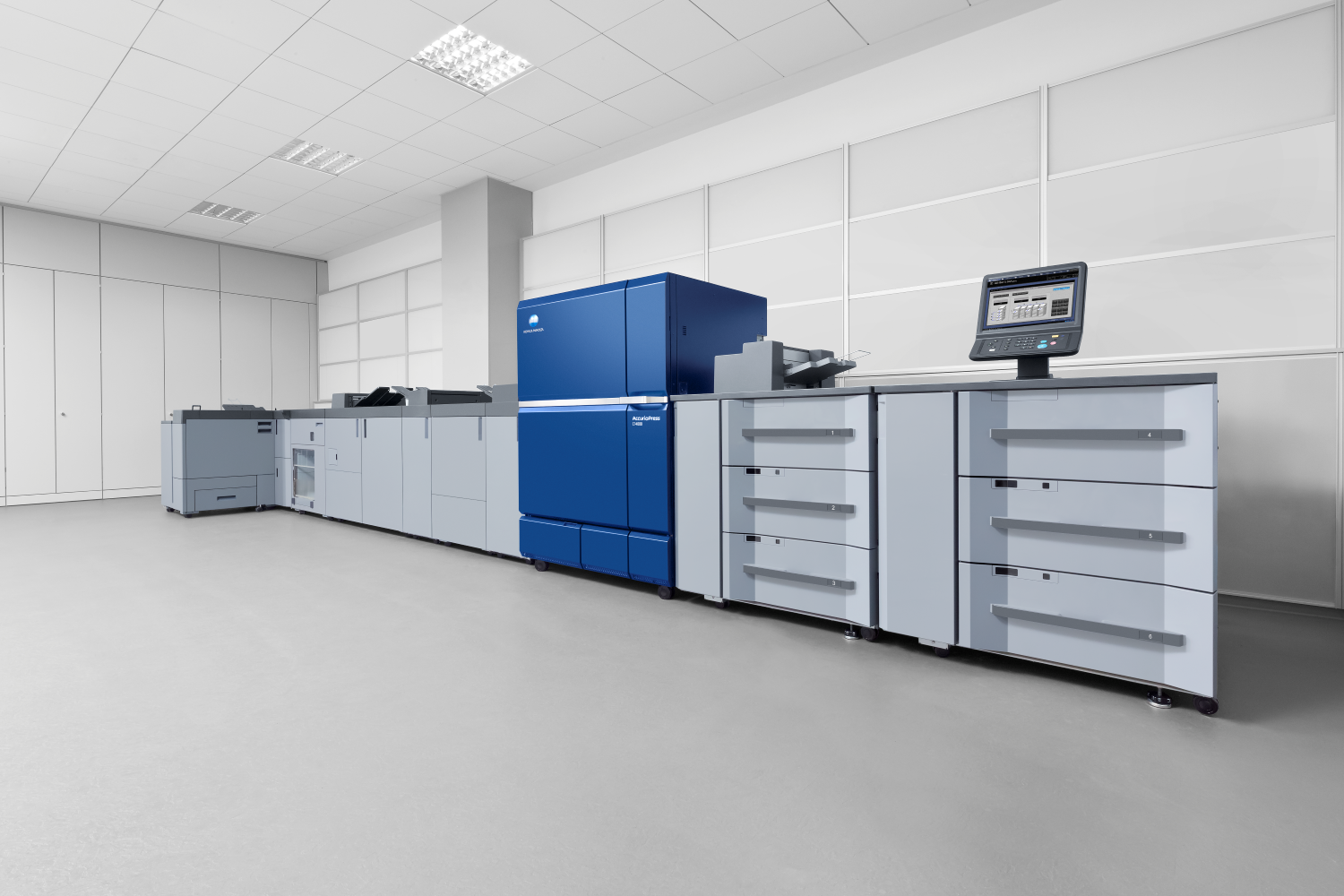When people think of the dangers of cyberattacks in the workplace, they often visualise computers and laptops as the victims, not office printers. However, printers can be more vulnerable and easier to infiltrate than other devices.
The challenge with network printers is that they sometimes aren’t secured by enterprises, giving cybercriminals the opportunity to exploit those vulnerabilities to bypass the cybersecurity system and access data stored on the printer’s own hard drive or the company’s network. As more and more devices connect to the company network, it’s increasingly important for organisations to protect their infrastructure from cyberthreats like phishing, malware, unauthorised downloads, and more.
At Konica Minolta, we have identified five areas of risk that all businesses should be aware of and compiled some simple steps organisations can take to help mitigate the threats:
1. Physical theft
Cybercriminals are typically anonymous and infiltrate networks offsite, and even offshore. However, physical cybersecurity threats do exist, and office printers present the perfect opportunity to carry them out. Most offices have paper documents lying around in many places, from desks to printer trays, placing them at risk of theft. Keep physical security in mind by placing printers in a safe area and implementing user authentication requirements that protect against physical removal of information via hard copies.
2. Network access
An unsecured printer provides access to an entire network of connected devices. Once a cybercriminal has gained access to the internal network, they can look for unsecure devices such as laptops and mobile phones and have immediate access to sensitive data. They may also spy on the day-to-day activities of employees and access confidential information that way. Securing a printer is the best step toward mitigating malicious network access. This can be done by setting up authentication controls and limiting access privileges to printers.
3. Data breaches
Printers present the perfect opportunity for cybercriminals to exploit and hold sensitive information to ransom. Most printers and copiers have internal hard drives that cybercriminals can manipulate if left unsecure. The hard drive stores the data from every incoming and outgoing document that somebody prints, scans, copies, or faxes. If breached, a cybercriminal would have access to all the data stored on the device and may demand a ransom to restore access. A self-encrypting storage drive can act as a security safeguard to protect all data stored on the storage drive from unauthorised access and is an important measure for businesses to take.
4. Denial of service (DoS)
A DoS attack on an unsecured office printer can give cybercriminals control over system functions and passwords to deny employees access to the server. One attack in particular, the paper DoS attack, occurs when cybercriminals send multiple print jobs to the target server, overloading it with traffic until the printer exhausts its paper supply. This can cause major disruption to business operations as well as hefty costs associated with replenishing lost paper resources. Regularly changing passwords and updating device firmware will help to reduce the risk of DoS attacks.
5. Document interception
Documents in transit from a device to a printer over an unsecured network may be intercepted and end up in the wrong hands. This typically occurs with modern printers as they can connect to the web and cybercriminals can simply exploit the printers’ open network ports to view the data. Konica Minolta’s multifunction printer devices have security capabilities to protect data, including password encryption and data cleansing as well as virus scanning and unauthorised copy prevention. Businesses can choose to activate some or all these features, depending on their needs. Taking proactive steps toward securing printing devices ensures that the wrong people can’t access or read inbound or outbound documents.
Increasing your print security
Printers are complicated devices with multiple internet-connected components, making them vulnerable to exploits that can pose a serious security breach and may become detrimental to business operations as well as brand reputation.
At Konica Minolta, we help businesses of all sizes keep their data safe through our bizhub Secure Service offering. As part of this service, businesses receive automated configuration of their machine for optimal security, automated deletion of any files, password protection, and an encrypted storage drive that protects all data stored on the Storage Board from unauthorised access.
To find out how Konica Minolta can strengthen your print infrastructure and protect your organisation’s network from the risks of printer cyberattacks, contact the team today.





